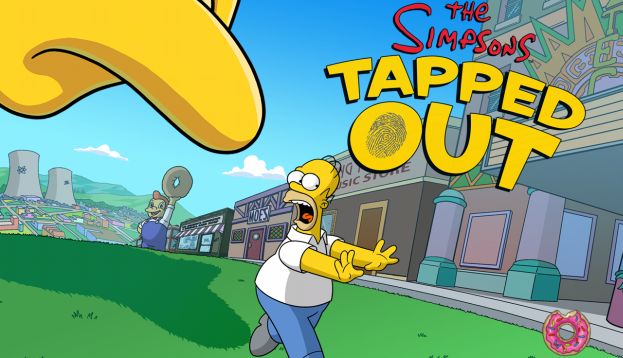The Mobile Gaming USA conference in San Francisco provides some key insights into the current and future state of the mobile game industry, as well as some prime networking opportunities for the attendees. Hosted by industry consultant Gordon Bellamy, the conference started off with SuperData senior analyst Stephanie Llamas providing a look at the mobile games business and where it’s headed. “My job to understand why we see different shifts and trends in the data,” noted Llamas. “Worldwide in 2015 we expect digital games to reach $63 billion across all segments. Mobile games will account for roughly 40 percent of the market by year’s end, which is roughly $25 billion.”
 Stephanie Llamas
Stephanie Llamas
Llamas pointed out that the rapid growth of the mobile gaming market is slowing down, at least in Western markets. “The growth rate is declining as the result of overall maturation in the market,” Llamas said, while pointing out “It’s not that mobile games aren’t thriving or healthy, it’s just becoming more saturated.” The growth rate SuperData projects for Western markets is 7 percent in the next year, and this will result in the shrinkage of Western market share for mobile games. Western markets will take a 34 percent share, down from 40 percent in 2013, according to Llamas.
The Asian market now accounts for more than half of the total worldwide market, and SuperData expects Asia to continue to grow its market share and revenue over time. “We don’t know when it will start to stagnate,” Llamas said.. SuperData predicts estimated growth for Asia’s mobile games market of 22 percent in 2016 , while Western markets will only grow 3 percent. “Asian markets will get about 10x the growth of Western markets,” Llamas pointed out. Still, that’s an overall number, and Asia is very fragmented across different countries and even within China, with over a hundred different Android app stores.
Crucially, how much mobile gamers are spending is very different in different countries. “Spending in Asia, on average, is higher than North America,” Llamas said. North American spending averages $31.78 versus $25.88 in Asia. Korea and Japan are the countries skewing that average higher. China averages $19.18, Korea $53.66, and Japan tops them all with $59.88 per mobile game spender. “Japan is roughly 50 percent of Asia’s mobile market, due to the high spending and conversion figures, Llamas pointed out. “Japan has less than a sixth of China’s active users, but are able to take advantage of that space. In China we don’t see as many spenders or as much spending.”
Andrew Sheppard, the COO of Japanese mobile game giant Gree International, spoke next on ‘Creating an International Games Business.’ He agreed with Llamas that the mobile game market is maturing, and said this “On a mature platform, where the installed base is fixed and you’re fighting for share, you don’t get by with building a clone,” Sheppard said. “All the companies that made themselves big in the early stages of free-to-play, those guys don’t have the muscles to build a game that actually stands up or stands out now.”
 Andrew Sheppard
Andrew Sheppard
Sheppard went on to note that marketing costs now typically account for more of the costs of an F2P game than the development costs, something that’s not broadly understood in the industry. That leads to a very different idea of what games to move forward. “Throwing up a bunch of stuff and seeing what works, that’s kind of scary,” Sheppard said. That’s especially true when it takes from $5 million to $10 million to build a game, and from $5 million to $40 million a month to market a game, you don’t want to have a miss.
Sheppard noted that Gree is pleased to have a hired a new VP of marketing, Shawn Conly, who managed brands at EA. “I’ve been trying to move to a more product marketing approach,” noted Sheppard. He believes marketing is more important than ever. “All the top guys are running TV ads, it’s full integrated marketing,” Sheppard said. “Marketing has become art and science, just like development… I think there’s more innovation going on on the marketing side than there is on the development side.”
Sheppard was followed by the vice president and group general manager for EA Mobile, Bill Mooney, who sat down with VentureBeat writer Dean Takahashi to discuss EA’s take on mobile games and brands. “The market is mature, we’re at a point where acquisition is a major problem,” Mooney noted. He said that “table stakes is making a great game” these days, and that’s arguably harder with a branded IP. Still, if you do it right, “you capture an audience that loves something. I think we can capture casual as well as core gamers, ” Mooney said.
Mooney talked about how to select the right brand to build a live game service around, and longevity is important. “A single celebrity brand is very dependent on that celebrity having staying power for a year or two. Is it worth it in year two or three ” Mooney asked. “I think TV works very well because it maps well to the mobile experience. It maps to the shorter amount of time people play on mobile. Movies have done fine, but they haven’t had the staying power. EA owns sports and that has done really well. I personally am skeptical that second-tier brands will be worth it.”
 Bill Mooney
Bill Mooney
Overall, Mooney sees that for branded IP in particular on mobile, “Fewer, bigger, better is the way you get into the top twenty” apps. He noted that it’s going to be tougher than ever to be in the top twenty unless you’re a major studio. EA Mobile’s hit game The Simpsons: Tapped Out is still going strong after years, and that’s because of the effort that both EA and The Simpsons team has put into it. An obsession with details, putting out regular new content, and working closely with the writers and creators at the TV show have helped create and maintain a huge audience for the game, with a couple of hundred million downloads so far.
There will be more insights coming from the conference today and tomorrow, as it continues to explore key topics for the mobile games industry.

